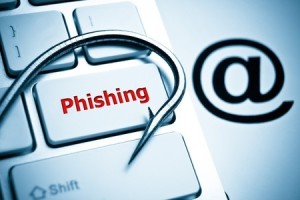 Email and web-based forms have changed the way we communicate with clients, colleagues and friends. They offer 24/7 convenience, tracking capability and the ability to share information and photos. Technology has made many processes more efficient, but it has also opened a can of worms – email spam and phishing forms — that wreak havoc on your medical practice.
Email and web-based forms have changed the way we communicate with clients, colleagues and friends. They offer 24/7 convenience, tracking capability and the ability to share information and photos. Technology has made many processes more efficient, but it has also opened a can of worms – email spam and phishing forms — that wreak havoc on your medical practice.
Email spam and phishing cast for easy prey
Like you tell your patients – “An ounce of prevention is worth a pound of cure” – so your internet provider or web designer should lock down your website to make sure spam can’t come in. They do this by installing the latest spam-blocking software or by updating your virus protection.
Don’t bite on bad email
Spam email and phishing links exist to sell a product you don’t need or to access your client database. If an irregular message arrives in your inbox, it’s probably phishy. Before opening a message:
- Check it for poor spelling or grammar.
- Look at the email address to see if it ends in .com, .edu or .net or seems legitimate.
- Move your mouse over an embedded link to see the origination address.
- Use individual names for email addresses rather than generic titles such as “office manager@.”
- Take a screen shot and send it to your IT department to check.
Reel in phishing forms
Catalyst Healthcare Marketing has witnessed the growth of sophisticated spambots that complete contact forms and cause problems for your computer system and staff. You have options to thwart them:
- CAPTCHA (Completely Automated Public Turing Test to Tell Computers and Humans Apart) is an image-based utility that asks humans to identify distorted numbers or letters on a photo that spambots cannot recognize.
- Turing tests, named for Alan Turing, trick spambots by identifying communications as coming from a machine. CAPTCHA is a type of Turing test but there are others. Website designers can incorporate coding that looks like a line in your contact form to complete. Spambots may enter data in that space. Humans cannot see this line, so they won’t address it. Your website administrator will recognize the spambot because data were entered in a hidden area.
Turn your website into a net
If you’d like to learn how you can protect your medical practice from unwanted email spam and phishing forms, contact the experts at Catalyst Healthcare Marketing. We’ll help you catch problems before they cause you to drown.
Comments are closed.